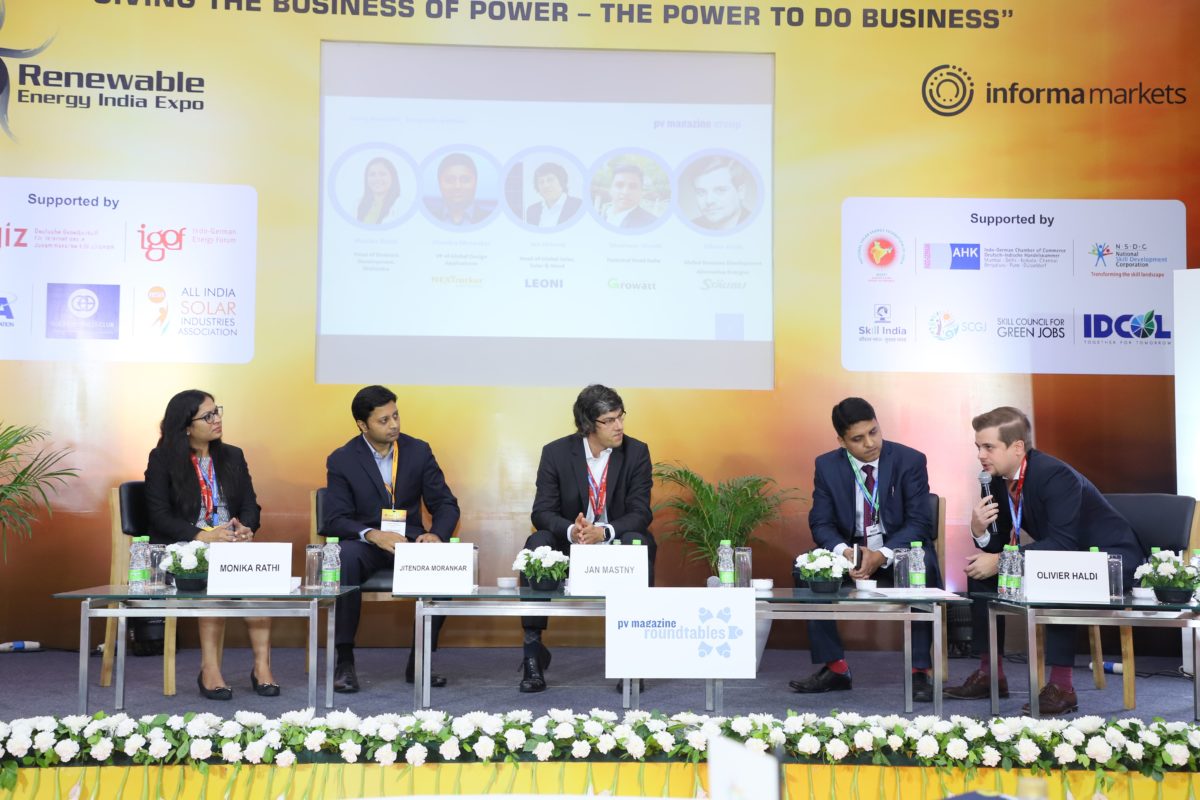Following the best practices in component selection, installation and monitoring is key to avoid incidences like early PV system failures and sudden fires (as in the case of Walmart’s rooftop solar installations using Tesla panels). This was a major takeaway from the event, which was co-moderated by Jonathan Gifford, Editor in Chief Global, pv magazine group and Subrahmanyam Pulipaka, CEO, National Solar Energy Federation of India.
Olivier Haldi of Stäubli Electrical Connectors highlighted that the recent Tesla panel fires is a typical case. It became public because it’s too big a company. The issue [of PV panels catching fires] is mainly because there is a lack of knowledge about how important small components like connectors are. As all the energy runs through connectors, it’s important to ensure they are good quality.
“Correct insulation handling is equally important. The [Tesla panel fire] case is under investigation, but cross-connection between different brands of connectors—or incompatibility—is a likely cause,” he said.
With failures having a huge negative impact on the profitability and bankability of PV projects, Haldi underscored the need for creating more awareness about the choice of right components, following the right steps during installation and proper monitoring.
Jan Mastny of Leoni highlighted that in India it is important to impart education on right specifications and requirements for PV installation.
“Many companies don’t recognize the technical limitations of cables. They are using the cables the wrong way; they bury the cables under ground or immerse in water for floating PV. As cables are not designed for such usage, this leads to accelerating the ageing process or results in fires,” he said.
With regards to module mounting structures (MMS), there are two big issues in the Indian context that could lead to failures, said Jitendra C Moranka of NEXTracker: “First, the core standard used to design these structures isn’t adequate. It provides guidelines only for static structures while there are a lot of dynamic loads on the modules.”
“Manufacturers need to understand that solar is not one static standstill structure but it’s an array. So the design has to be done for an array. The proper way of doing it is to do an internal test. Do an internal test, get the coefficients out of it and then design,” Morankar highlighted.
“The second important thing is that tools used for design are not adequate. Mostly the MMS is made of thin-guage material, which has strength just because of its shape. The dynamic forces that the structures faces may deform the material. Once it deforms, it loses strength and hence the structure can fail,” he added.
So, the industry should do internal mechanical load test and use this data to develop its own tool to design the MMS, Morankar said, while also highlighting dynamic loading as the third most important factor for tracker design.
Read detailed discussions from the Quality Roundtable, held in India at REI 2019, in one of the upcoming pv magazine print editions.
This content is protected by copyright and may not be reused. If you want to cooperate with us and would like to reuse some of our content, please contact: editors@pv-magazine.com.









By submitting this form you agree to pv magazine using your data for the purposes of publishing your comment.
Your personal data will only be disclosed or otherwise transmitted to third parties for the purposes of spam filtering or if this is necessary for technical maintenance of the website. Any other transfer to third parties will not take place unless this is justified on the basis of applicable data protection regulations or if pv magazine is legally obliged to do so.
You may revoke this consent at any time with effect for the future, in which case your personal data will be deleted immediately. Otherwise, your data will be deleted if pv magazine has processed your request or the purpose of data storage is fulfilled.
Further information on data privacy can be found in our Data Protection Policy.